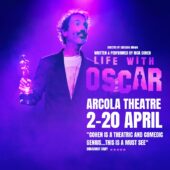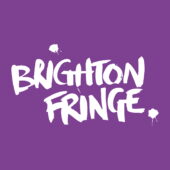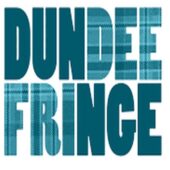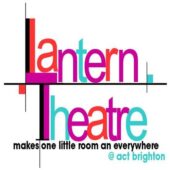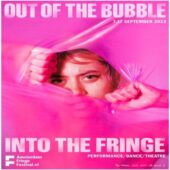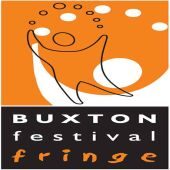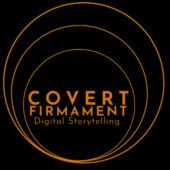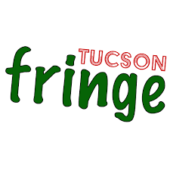I think it’s always best to start at the beginning… and developing a new hub has been a real learning curve.
So I was thinking on what might bring you, dear reader, to the perfect jumping-off spot, and thought to use our experiences as a real-life example for you – our reasons behind having a hub, how we chose our location, how we programmed our acts.
To help us out, I squeezed some time out of our Business Development Manager and Venue Director, Jared Harford, for a chat about the process of developing and organising a hub. Jared has been instrumental in actualising the hub and he definitely has some things to add on the topic. So… let’s get into it…
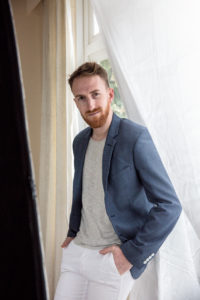
C: How did you choose The Principal Edinburgh George Street Hotel to become a new hub?
J: A large part of choosing the Principal had to do with our pre-existing relationship with the hotel. We’ve had one or more shows in the Principal Hotel over the past four years, and each year we’ve added more shows to see how the hotel can handle the growth. Last year, especially, was like a tester year for the hub. We wanted to see if the hotel could host alternative theatre, not just dining experiences, and it went well! In addition to Faulty Towers The Dining Experience and Confetti & Chaos [then known as The Wedding Reception], we had a children’s show, Signor Baffo’s Restaurant, and our newest development, Pamela’s Palace. All shows did brilliantly in the space so we were sure a hub could work.
We want to showcase how we can convert alternative spaces into theatres and I’m really looking forward to seeing it all come together this year.

Of course, there are added bonuses to being at the Principal Hotel, specifically. It has a great reputation in Edinburgh. It’s in a great part of New Town – where all other new town shows are hosted, but away from the hustle and bustle of the Fringe madness. There are things like parking available, accessible public transport, really good food, a comfortable bar… I mean, this list could get quite long.
C: This year, making a hub with 11 acts is a big change from previous years. What did you need to organise or arrange with the hotel to make it a reality?
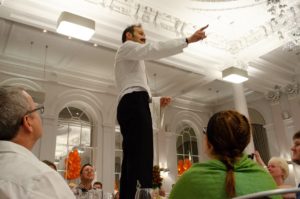
J: We really had to think about how we can make the hotel feel like a festival venue within the confines of the hotel’s own branding restrictions. It’s not the typical Edinburgh Fringe venue you’d expect, so we needed to organise signage and posters and talk about flyering.
There are other aspects, too. Like it’s a functioning hotel that gets fully booked out over August so we’re competing with 400-500 guests at the hotel. We need to be mindful of guests and the shared spaces, and not plaster the walls with banners, for example.
C: What factors go into making any venue a suitable Fringe hub venue?
J: The first thing I ask is ‘is there enough space?’ A hub runs with multiple shows on at the same time, so we have to know if there is enough space. And not just space for the shows, but dressing room space, storage space for props, space for the actors, space for signage and advertising, space for a box office, space for front of house and a front of house team. Is there space for a bar, is a bar a possibility at all? This can seem like a trivial one, but actually it’s very important! There are questions of general functionality, like how often is it accessible for deliveries of sets and costumes, or how often you can get in for tech rehearsals. Are there noise restrictions or any council restrictions? And, of course, we have to ask about accessibility – is it accessible for people with disabilities?
We have to organise a theatre licence, but we also have to check if the venue has a PRS licence – if the venue is licensed already then we, as the theatre company, don’t need to get our own.
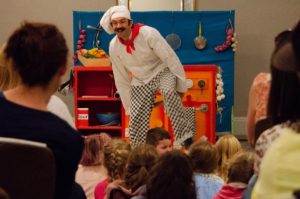
C: OK, so let’s change direction a little here… how about programming – how did you go about programming the hub?
J: First we had to decide on the number of shows we could comfortably host. That came down to how many rooms we had access to and when. We initially were thinking around 12 or 13 shows but with a few changes to the spaces available in the hotel over the month, we decided 11 was a safe number. We’ll have 11 shows running over three spaces in the hotel daily.
Then I had to think about restrictions for the shows. Things like, we can’t have full frontal nudity or any vulgarity. So we couldn’t have someone come in and strip off naked, paint themselves and start screaming which, to me, is the quintessential Fringe show. We also have noise restrictions to consider. I needed to look at sets, sound, lighting requirements for the shows and ask if the logistics could work in the spaces we have.
We need the bump-ins and bump-outs to be do-able within 30 minutes on either side of the show. These were all questions that needed answering first.
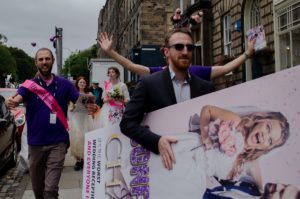 We initially did a call out for shows with the 57 actors in our company. This is partly because we knew we are a bit of a risk as a new hub and we wanted to work with people who felt they could trust us, and knew how we worked, plus we hoped they would advocate for us with their friends who might have shows. We also did this because our hub is designed to support diverse acts and artists and we wanted to support our own actors who had been working on something new. Our number one aim is to make the whole Fringe experience affordable and enjoyable.
We initially did a call out for shows with the 57 actors in our company. This is partly because we knew we are a bit of a risk as a new hub and we wanted to work with people who felt they could trust us, and knew how we worked, plus we hoped they would advocate for us with their friends who might have shows. We also did this because our hub is designed to support diverse acts and artists and we wanted to support our own actors who had been working on something new. Our number one aim is to make the whole Fringe experience affordable and enjoyable.
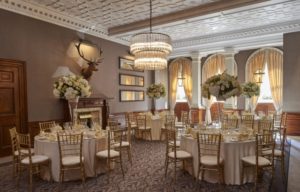 So once we started putting the call out and put our hub up on the Edinburgh Fringe website, we started to get some interest. From there it was co-ordinating and planning all the elements I mentioned before. I also went and saw some shows at Adelaide Fringe and approached a few shows I thought would fit our style and theme well.
So once we started putting the call out and put our hub up on the Edinburgh Fringe website, we started to get some interest. From there it was co-ordinating and planning all the elements I mentioned before. I also went and saw some shows at Adelaide Fringe and approached a few shows I thought would fit our style and theme well.
C: You mentioned the tech restrictions as a consideration: how did you decide what tech could work in each space?
J: Well, a big roadblock was that we can’t have any rigged lights. That’s the biggest thing. It really affects lighting. All of it needs to be front of stage, side of stage. We need to be a lot more creative with how we use lighting and how to light actors. We searched for shows with tech that is do-able within those restrictions. We want a full-show to be possible so we specifically targeted shows that could work.
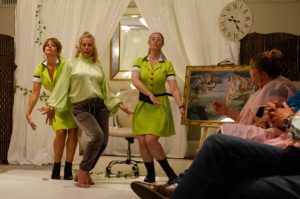 C: What about the overall theme and style? What kind of theatre is at the Imagination Workshop hub?
C: What about the overall theme and style? What kind of theatre is at the Imagination Workshop hub?
J: It is an interactive and immersive hub. It is non-traditional theatre setting coupled with non-traditional theatre and that’s how we like it.
C: What kind of people would enjoy coming to this hub? Is it developed for multiple audiences or one specific type?
J: It’s definitely for multiple types of people. We have our customer base who reliably come to Faulty Towers The Dining Experience, and a large portion of them are not the regular Fringe goers. So the split is probably 50-50 for those who are traditional Fringe goers and those who are more Scottish locals. We predict those numbers will be replicated for our newest show to the Fringe – Only Fools The (cushty) Dining Experience. The other acts we are programming are about reaching different types of audience. We want to make all different types of theatre accessible and interesting to all different types of people.
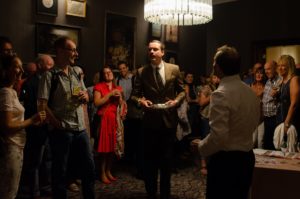 C: Did any shows find us? How did they do that?
C: Did any shows find us? How did they do that?
J: Some shows found us. We had quite a few enquiries come through the Fringe website – we have the venue listed on the Fringe site and they contacted us to see if we could be a match. Two shows found us at Adelaide Fringe – they heard through word-of mouth that we were looking for shows and approached me.
C: What is the best piece of advice you would give to yourself if you were to do the process again?
J: Make someone else do your admin. Contracts, offers, mailing out information, creating invoices. The nitty gritty entails a lot of work and time and I would definitely get more help if I did it again!
We hope this blog has been useful in giving you some insight into pulling together a hub – and how we’ve pulled the Imagination Workshop hub together in particular. Thanks to Jared for taking the time out of his schedule to speak with me. And thanks to you for taking the time to read this.
I am about to go on holiday to the land down-under, so my colleague and friend, Jack, will be taking over the station in my absence. We have some great blogs on the horizon and I will be reading along with you!
See you in a few weeks… try not to miss me too much.
XOXO
